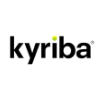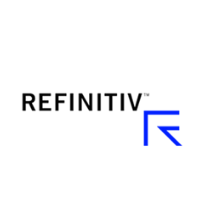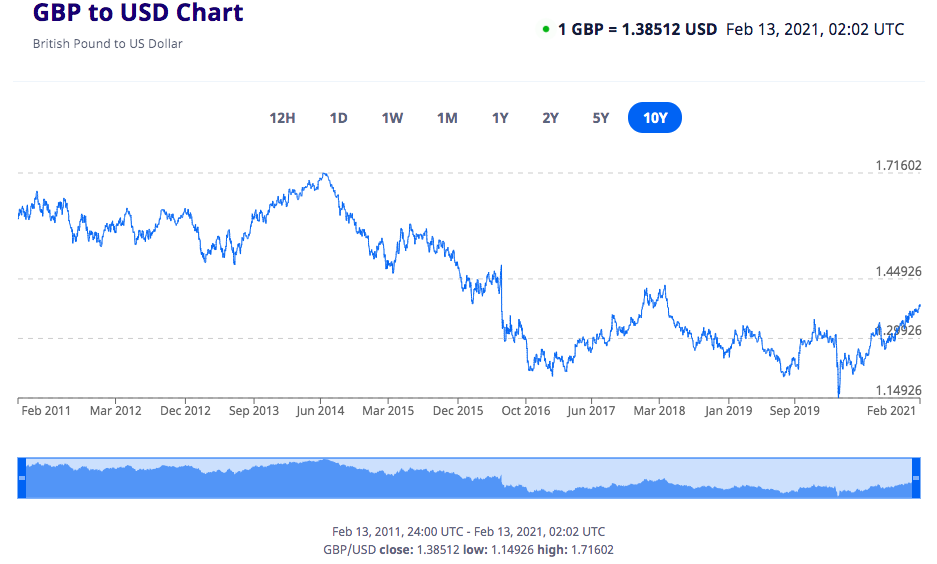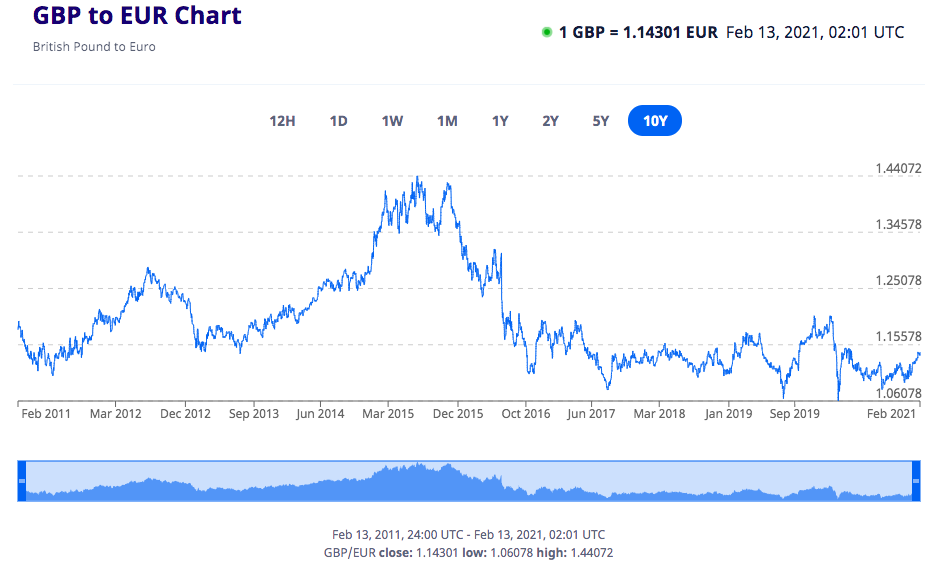| 09-03-2021 | Carlo de Meijer | treasuryXL
Notwithstanding the various benefits of blockchain technology, there are still a number of big challenges to overcome before mass adoption can be realised. These range from low scalability to lack of regulation and limited number of qualified people.
In some of my previous blocks I already went into more detail into these challenges and possible solutions to overcome them. In this blog I will limit myself to the main technological ones including scalability, privacy and interoperability that are limiting its uptake. But above all I will show what third generation solutions have been or are being implemented to tackle the various issues.

A. Scalability
One of the main problems related to blockchain’s technology is scalability, or better said the lack of scale. It refers to the limited rate at which transactions are being processed on blockchain compared to existing methods. Large blockchain networks like Bitcoin and Ethereum are not able to handle as a result of their technological set up. Caps are placed on the number of transactions that can be processed on-chain. This scalability issue is especially a problem for companies that have to process massive transactions and need networks that enable high transaction throughput while maintaining low latency.
Off-chain scaling solutions
For this reason, many view scalability as something to be achieved off-chain, while security and decentralization should be maximized on the blockchain itself. Off-chain scaling refers to approaches that allow for transactions to be executed without overcharging the blockchain. Protocols that plug into the chain allow users to send and receive funds, without the transactions appearing on the main chain.
There are a number of interesting off-chain solutions that are being explored to solve the scalability issue ranging from the implementation of so-called accelerated chips, the use of sidechains and sharding.
Accelerated chips
Accelerated chips could be used to speed up confirmation and transaction times. A forerunner in this is Skynet Core.
Skynet Core
Skynet aims to resolve the issues of blockchain adoption and the functionality of the Internet of Things (IoT). They aim to deliver an end-to-end system that includes a hyper-scalable IoT blockchain network and the licence free blockchain IoT chip named Skynet Core. The project that includes billions of licence free blockchain chips will deploy to devices worldwide, connecting via the Skynet blockchain network.
This blockchain chip can replace an existing CPU and features a core optimized for blockchain technology as well as the Internet of Things. The hardware makes it possible for Skynet Core devices to run blockchain networks with high throughput while providing secure protection from theft of cryptocurrency.
Side Chains
Another tool to speed up scalability are so-called side chains. A sidechain is a separate blockchain. However, it is not a standalone platform, as it is pegged in some way to the main chain. The main chain and the sidechain are interoperable, meaning that assets can flow freely from one to the other
Side chains are aimed to reduce the load on a given blockchain by sending transactions via these connected sidechains and putting the end state of the transaction on the main blockchain – thereby offloading all the processing of transactions from the main blockchain. There are a number of ways to ensure that funds can be transferred. In some cases, assets are moved from the main chain by being deposited into a special address, and a matching amount is issued on the sidechain. A more straightforward (albeit centralized option) is to send funds to a custodian, who exchanges the deposit for funds on the sidechain.
Next to the first and second generation solutions like Bitcoin’s Lightning network and Ethereum’s Raiden Network, there are a growing number more advanced applications to upgrade scale including AION protocol and Neo’s Trinity.
Sharding
Another scaling solution being worked on is sharding. Main example is the Ethereum Blockchain. Sharding is a way of spreading out the computing and storage workload from a blockchain network into single nodes. This technology divides a blockchain network into many separate areas, called shards, with each shard assigned a small group of nodes to maintain. Each node no longer has to process the entire network’s transactional load. Each node will only maintain the info related to its specific partition or shards, removing the need for all nodes in a network to be apart of a transaction.
Sharding includes transaction sharding and state sharding. Transaction sharding refers to assigning different transactions to different shards. This way, parallel processing becomes possible, leading to high TPS. In contrast, state sharding allows the data state to be stored in different pieces on different nodes. In essence, it means that a single node is only responsible for saving a portion of the ledger.
Multi-layered structure
Another solution to upgrade scale is the use of a multi-layered structure, which is the isolation of transaction processing and data storage. Main projects are Cardano and CPCChain.
Cardano
Cardano (ADA) is the most well-known project which proposes this multi-layered structure. Cardano that can be categorized as a third-generation blockchain (with Bitcoin and Ethereum considered the first and second-generation chains.
Cardano is an open-source and decentralised blockchain project with a layered architecture that is composed of two main elements, the Cardano Settlement Layer (CLS) and the Cardano Computational Layer (CCL), which makes Cardano truly unique. Most other existing blockchain platforms only function with a single layer, which often causes network congestion, slows transactions and drives fees higher.
The settlement layer powers Cardano’s unit of account. This is where peer-to-peer transactions are facilitated, such as the transfer of tokens between users. The settlement layer is responsible for transaction confirmation and the flow of the coin. The computational layer maintains the chain’s security, deploys smart contracts and is programmed to recognize the ID of the data. This layer also serves as a framework that is designed to ensure regulatory compliance with various jurisdictions.
CPCChain
Another promising solution to tackle the scalability issue is CPCChain. CPChain, which is partnered with High Performance Blockchain (HPB), VeChain, Qtum, and ETP Metaverse, intends to build a blockchain-based data platform for next generation IoT systems in combination with distributed storage and encryption computation.
It is aimed to provide the whole process solution from data acquisition, storage, sharing to application, for large-scale distributed IoT systems, enabling high TPS and low transaction latency. CPChain thereby separates its blockchain layer from its application layer, so the blockchain only has to store data IDs (which are on a cloud) rather than the data itself – thereby reducing block sizes.
B. Privacy
Another important challenge to overcome is the privacy issue. Blockchain is built in such a way that all transaction are transparent while its actors can be identified. This is especially a problem for public blockchains, like Bitcoin and Ethereum, where the network ledger is open to anyone and all transactions are transparent – so they can be tracked. This lack of privacy might be an issue for certain types of transactions, for instance in the case of confidential corporate deals.
Protocols
In the meantime several protocols have been developed as alternatives to Bitcoin’s pseudo-anonymity. The three main ones being CoinJoin, Ring Signature and Zero-knowledge proof.
Coinjoin
CoinJoin is the technology used by Dash, developed to introduce a layer of privacy to otherwise public Bitcoin transactions. It is an anonymization strategy that protects the privacy of Bitcoin users when conducting transactions with each other. The protocol requires multiple parties to jointly sign an agreement to mix their coins in a single Bitcoin transaction, making the transaction more difficult to trace. The process is also known as coin mixing.
In the meantime, in order to prevent masternodes from being attacked, Dash introduced Chaining and Blinding, allowing senders to choose multiple masternodes randomly with which to send the transaction. The system enables the mixing of transactions among these master nodes, and transactions appear to be sent by the masternodes and not by the users themselves.
Ring signature
Ring Signature as used by Monero is one of the most famous privacy protocols. A ring signature is a type of digital signature in which a group of possible signers are merged together to produce a distinctive signature that can authorize a transaction. It is composed of the actual signer, who is then combined with non-signers to form a ring. Monero utilizes ring signature technology to protect a user’s privacy in the input side of a transaction by helping the sender mask the origin of a transaction by ensuring that all inputs are indistinguishable from each other.
Because Monero makes use of ring signature technology, it must include a feature that allows for the verification of outputs that are being spent in a ring signature transaction, or else, a user would be able to spend the same transaction output twice i.e. a double-spend. This potential issue is addressed by Monero’s use of key images.
A key image is a cryptographically secure key that is derived from an output transaction being spent, and is made part of every ring signature transaction. This process masks the origin of the transaction, and ensure that all inputs are indistinguishable from each other. Only one key image exists for each transaction output on the Monero blockchain.
On top of the Ring Signature, Monero also utilizes Stealth Address technology to automatically generate one-time addresses for every transaction initiated on the Monero network to ensure the privacy of the recipient. It prevents outputs from being linked to a recipient’s public address. Thanks to Stealth Addresses, this transaction process occurs without publicly linking any transaction to the merchant’s wallet address.
Zero Knowledge Proof
Another solution for blockchain privacy issues, used by Zcash to allow anonymous transactions, is Zero Knowledge proof (ZKP). It is a technique by which a prover can convince the verifier of a fact without revealing the actual content. The technology automatically conceals transaction information, such as sender information, receiver information, and the amounts. Only users who own the private keys of the smart contract being performed have full access to the information. In such cases ZKP can ensure that others only know that a valid transaction has taken place, but no information is available to them about the sender, recipient and type/quantity of asset transferred.
Alternative Methods
At the same time other alternatives are available, such as Permissioned or private blockchain platforms like Quorum, Hyperledger Fabric and Corda, which provide the capability of executing private transactions between two or more participating nodes. This ensures that the transaction details pertaining to the sender and recipient are part of a private ledger and will not be revealed to unauthorized participants.
Or self-Sovereign Identity management platforms that provide the concept of pair-wise decentralized identifiers and verifiable claims that can be presented to third party service providers without revealing all the details of a person or entity and thus protecting privacy
C. Interoperability
While blockchain was conceived as a decentralized technology, individual blockchain networks are not inherently open and are not able to communicate properly to each other. There are a large number of blockchain projects, all of which have different characteristics – such as the type of transactions, hashing algorithms, or consensus models – and which focused on a particular area.
The problem is further deepened by different networks and financial institutions running completely different governance rules, blockchain technology versions and regulatory controls. This has resulted in a series of unconnected blockchain ecosystems operating alongside, but siloed from each other, preventing the industry from reaching its full potential.
Isolated inter-blockchain communication can put a strain to blockchain’s scalability and mainstream adoption. To solve this problem, various new-generation cross-chain technologies that could help different blockchains to interconnect are being explored.
Top Interoperability projects
Most blockchains enable the creation of sidechains, that are blockchains running in parallel to the main blockchain. Next to the more well-known examples of cross-chain communication that are mostly first- or second-generation, like the Bitcoin Lightning Network, or the Raiden Network of Ethereum and the Ripple Interledger Protocol, there is a growing number of interoperability projects that are exploring third-generation solutions such as Cosmos, NeoX and Polkadot blockchain.
Cosmos Blockchain
Cosmos blockchain is an interesting blockchain interoperability project, running on the fault tolerance protocol – Tendermint Byzantine. The blockchain project is aimed to become the hub of many projects Cosmos blockchain architecture consists of several independent blockchains called Zones, attached to a central blockchain dubbed as the Hub. Zones, which are independent blockchains are plugged into the Cosmos Network. These zones can interact with each other because of the Cosmos Hub and new ones can be connected.
A salient feature of Cosmos is permitting zones to preserve their consensus mechanism. Tendermint Core that enables high-performance as well as consistent and secure Practical Byzantine Fault Tolerance (PBFT)-like consensus engine, powers each zone in this case.
The cosmos Hub connects blockchain projects to enhance interoperability via the Inter-Blockchain communication protocol. Because of the interconnection, people can send tokens from one zone to another in real time and securely, without engaging the services of a third party. Cosmos blockchain can connect different zones from public to private project thanks to the IBC connection.
NeoX
NeoX is a protocol that implements cross-chain interoperability, to allow multiple participants to exchange assets across different chains and to ensure that all steps in the entire transaction process succeed or fail together. But instead of most protocols NeoX is divided into two parts: cross-chain assets exchange protocol and cross-chain distributed transaction protocol.
Essentially NeoX is the functionality of fusing the concept of Atomic Swaps with Smart Contracts. This means it can allow cross blockchain contract collaboration in a single smart contract. In order to achieve this function, one needs to use NeoContract function to create a contract account for each participant. If other blockchains are not compatible with NeoContract, they can be compatible with NeoX as long as they can provide simple smart contract functionality.
NeoX makes it possible for cross-chain smart contracts where a smart contract can perform different parts on multiple chains, either succeeding or reverting as a whole. This gives excellent possibilities for cross-chain collaborations
Polkadot blockchain
Polkadot blockchain is a high-profile multi-chain technology that is aiming to advance blockchain interoperability. It seeks to enhance the transfer of smart contract data through various blockchains. Polkadot’s ecosystem contains of multiple parachains which are individual blockchains thar differ in characteristics but have become part of the Polkadot environment. In Polkadot blockchain, transactions can be spread over a wide area given the number of chains in the network. All this is done while ensuring high levels of security on dealings. A relay chain is the central connector between these parachains.
Polkadot Blockchain interoperability project seeks to ensure a seamless connection between private chains, public networks, oracles as well as permission less interface. Aim is to enable an internet where independent blockchain solutions will be able to exchange information via a Polkadot relay chain.
Blockchain Industrial Alliance (BIA): Teaming up
What we also see is that a growing number of these projects are teaming up in order to allow their blockchains to communicate with each other. One main example is the Blockchain Industrial Alliance formed by ICON, AION, and WANChain. This teaming up is aimed at solving the blockchain isolation problem. The Alliance has the shared goal of promoting interconnectivity between the isolated blockchain networks. The Alliance’s main priority is collaborate on research on interchain transactions and communication. The Alliance will focus on developing common industry standards, sharing researching, and protocol architecture. All three blockchain projects that are participating in BIA have the common goal of connecting blockchain protocols.
AION
The AION network is a multi-tier federated blockchain network designed to interconnect the various blockchain entities, making it possible to integrate disparate blockchain systems in multi-tier hub. AION aims to become the common protocol used for these blockchains, enabling more efficient and decentralized systems to be built.
At the core of AION blockchain is a “purpose-built, public, third-generation” blockchain called AION-1, specifically designed to not only be self-sustaining but connect with other blockchains as well. The AION protocol enables the development of a federated blockchain network, making it possible to seamlessly integrate dissimilar blockchain systems in a multi-tier hub-and-spoke model, similar to the internet. This protocol will enable the transfer of value and data between all AION-compliant blockchains by utilizing bridges.
In essence, AION allows networks to communicate with each other, allowing any DApp to run on any blockchain within the network. On top of that, AION will also allow the participating blockchains to create common chains between them in order to conduct on-chain transactions.
Through AION each participating blockchain will be able to transact with all the chains connected to the ecosystem. Along with solving the interoperability problem, AION also wants to create a system which can work with both private and public blockchains and help in solving scalability. In addition AION helps organizations create blockchains which are interoperable but can have its own unique consensus mechanisms, issuance, and participation.
ICON (ICX)
The second partner is ICON, an interconnected blockchain technology and network framework designed to allow independent blockchains to interact with each other. In other words a system of sidechains in order to connect all industry chains to the main network.
ICON is supported through a cryptocurrency token, ICX. Communities are connected to the ICON Network through a decentralized exchange. That allows for the maintenance of a verified ledger shared within the community network itself, allowing participants in a decentralized system to “converge” at a central point. That is done by connecting a community to other communities through the ICON Republic and Citizen Nodes.
WanChain
WANCchain is an online interoperable blockchain solution, with secure multi-party financial platform computing. It relies on a proprietary protocol, the WANBridge model, that allows interconnection of private, public and consortium chains, making it easy to transfer digital assets between different blockchains. The blockchain interoperability solution seeks to rebuild finance by housing all digital assets on one blockchain, aiming to unite the world in isolated digital assets. The current WanBridge model allows for digital assets and data to securely and cheaply be transferred between different ledgers using cross-chain smart contracts.
Based on Ethereum, WanChain enables the deployment of private blockchain smart contract execution aiming to unite the world’s isolated digital assets. Privacy on the blockchain is enhanced by the use of Ring signatures as well as one-time stealth addresses. The Wanchain DeFi ecosystem includes WanSwap and WanLend, as well as several other major products that are now under development such as WanFarm and other DeFi applications. This will allow for much more efficient use of collateral and for WanBridge technology to salescalablyably connect any number of different blockchains.
Forward looking
For blockchain technology to become mainstream and implemented at a larger scale, the bottlenecks current blockchain platforms suffer from – scalability, privacy, and interoperability – need to be addressed. While blockchain technology has undergone rapid improvement since its creation, it’s a relatively young technology and some of the main problems still remain today.
Fortunately, many projects are working on some of the solutions proposed above. As more efficient techniques get invented in the near future these technological barriers will likely be overcome sooner rather than later.

Carlo de Meijer
Economist and researcher
Source
















